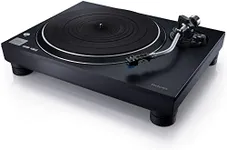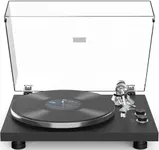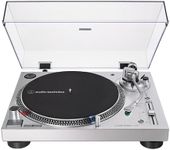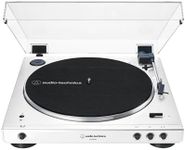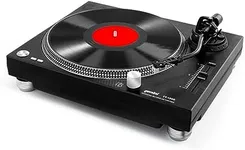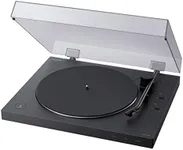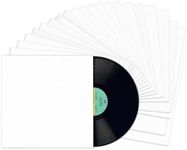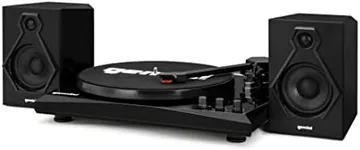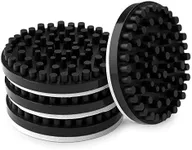Buying Guide for the Best Fully Automatic Turntable
Choosing a fully automatic turntable can be a rewarding experience for any music lover. Fully automatic turntables are designed to make playing vinyl records as easy as possible, with features that handle the tonearm and needle placement for you. When selecting the right turntable, it's important to consider several key specifications to ensure you get the best fit for your needs. Here are the main specs to look at and how to navigate them.Drive TypeThe drive type of a turntable refers to how the platter is powered. There are two main types: belt-drive and direct-drive. Belt-drive turntables use an elastic belt to spin the platter, which helps reduce vibrations and can result in better sound quality. Direct-drive turntables have the motor directly attached to the platter, providing more consistent speed and quicker start-up times, which is ideal for DJs. If you prioritize sound quality for home listening, a belt-drive might be best. If you need quick response and durability, consider a direct-drive.
Platter MaterialThe platter is the part of the turntable that the record sits on. Common materials include plastic, aluminum, and acrylic. Plastic platters are lightweight and affordable but may not provide the best sound quality. Aluminum platters are more durable and offer better sound isolation. Acrylic platters are considered high-end, providing excellent sound quality and reducing vibrations. If you're looking for a balance between cost and performance, aluminum is a good choice. For audiophiles seeking the best sound, acrylic is the way to go.
Cartridge TypeThe cartridge is the component that holds the needle (stylus) and converts the grooves in the record into an audio signal. There are two main types: moving magnet (MM) and moving coil (MC). MM cartridges are more common, easier to replace, and generally more affordable. MC cartridges can offer superior sound quality but are more expensive and require a compatible phono preamp. If you're new to vinyl or want a hassle-free experience, an MM cartridge is a solid choice. For those seeking the highest audio fidelity, an MC cartridge might be worth the investment.
TonearmThe tonearm is the part of the turntable that holds the cartridge and stylus and moves across the record. Tonearms can be straight or S-shaped. Straight tonearms are simpler and often found on entry-level turntables, providing reliable performance. S-shaped tonearms are designed to reduce tracking error and can offer better sound quality. If you're just starting out, a straight tonearm will serve you well. For more experienced users or those looking for optimal sound, an S-shaped tonearm is preferable.
Speed OptionsTurntables typically offer different speed settings to accommodate various types of records. The most common speeds are 33 1/3 RPM and 45 RPM, which cover most LPs and singles. Some turntables also offer 78 RPM for older records. It's important to choose a turntable that supports the speeds of the records you own. If you have a diverse collection, look for a model that offers all three speeds. For most modern collections, 33 1/3 and 45 RPM will suffice.
Built-in PreampA built-in preamp amplifies the signal from the turntable to a level that can be used by standard audio equipment. Some turntables come with a built-in preamp, while others require an external one. A built-in preamp can simplify setup and reduce the need for additional equipment. If you want a straightforward setup, look for a turntable with a built-in preamp. If you already have a high-quality external preamp or plan to upgrade in the future, a turntable without a built-in preamp might be a better choice.
Automatic FeaturesFully automatic turntables handle the tonearm and needle placement for you, starting and stopping the record at the push of a button. This feature is great for convenience and protecting your records from damage. Some turntables also offer semi-automatic features, where you manually place the needle, but the turntable will return the tonearm at the end of the record. If you value ease of use and want to minimize the risk of damaging your records, a fully automatic turntable is ideal. For those who enjoy a more hands-on experience, semi-automatic might be a good compromise.
